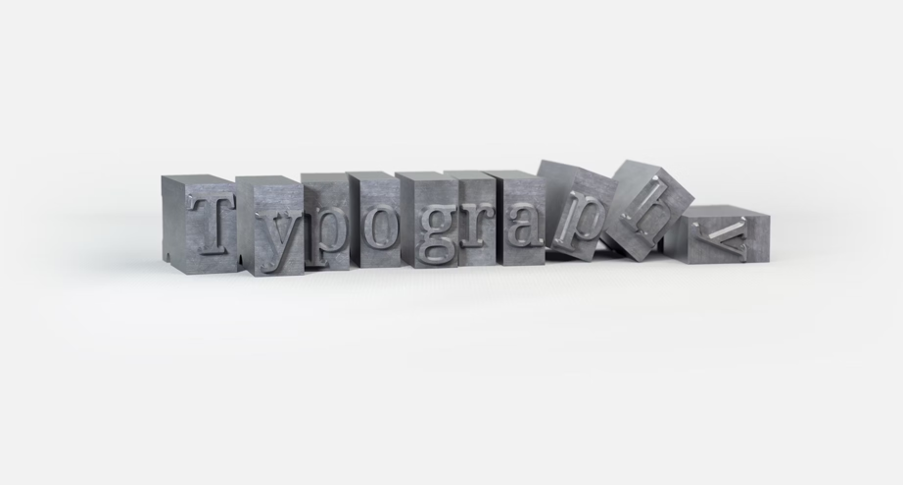Close your eyes and think of some websites you frequently visit. Can you clearly recall the fonts used in their logos, navigation menus, or call-to-action (CTA) buttons? Fonts are vital in shaping your brand identity, but they also serve functional purposes: effectively conveying information, enhancing legibility, and elevating the overall user experience.
Though widely used fonts such as Arial, Times New Roman, and Helvetica are dependable choices, selecting unique font combinations can help your website and brand distinguish themselves. In the realm of web design, fonts do more than deliver text—they act as powerful instruments for expressing brand personality and shaping a visually engaging interface. If you’re looking for a wide variety of unique and professional fonts, platforms like Creative Fabrica offer an extensive collection perfect for elevating your website design.
Types of Website Fonts
Choosing the right typeface can significantly enhance your site’s aesthetics and readability, leading to a more enjoyable user experience. Keep the following five font categories in mind when selecting typography for your website:
- Serif Fonts feature small decorative strokes or lines added to the end of a larger stroke in a letter.
- Sans Serif Fonts lack those small strokes, giving them a clean, modern look with more straightforward letterforms.
- Monospace Fonts assign equal horizontal space to each character, which is why they’re frequently used in displaying code.
- Slab Serif Fonts resemble traditional serif fonts but have thicker, block-like serifs for a bolder visual impact.
- Script Fonts use flowing, cursive strokes that imitate handwriting or calligraphy, often best reserved for titles rather than body text.
8 Best Fonts for Website Design
Looking to update your website’s appearance with a font that matches your brand’s voice? Here are ten top fonts that combine aesthetic appeal with usability, enhancing your brand’s communication.
1. Inter
Inter is a sans serif typeface crafted by designer Rasmus Andersson. It’s a free, open-source font developed specifically for digital interfaces—used by big names like GitHub and Mozilla. As a variable font family, Inter allows for enhanced flexibility in choosing weights and styles. It also incorporates OpenType features, such as tabular numbers and contextual alternates, that automatically adjust based on usage to ensure better readability.
2. Josefin Sans
Josefin Sans is a geometric sans serif designed by type engineer Santiago Orozco. Influenced by classic fonts from the 1920s like Kabel and Futura, Josefin Sans combines vintage elegance with modern precision. It works best for prominent text like headers and subheadings, making it a strong choice for brands that want to communicate sophistication and class.
3. Roboto
Originally created by Google to replace the Droid font in Android systems, Roboto is a neo-grotesque sans serif font known for its clean, modern appearance. Its diverse styles, weights, and widths make it incredibly adaptable for use across digital platforms. Because of its clarity and neutrality, Roboto remains one of the most popular typefaces for websites—ideal for headers, CTAs, body text, and logos.
4. Open Sans
Open Sans is a friendly, readable humanist sans serif designed by Steve Matteson, who also created Microsoft’s Segoe font family. Open Sans is optimized for web and mobile platforms and features a clear, upright shape that promotes legibility. It also includes extensive language support, ensuring accessibility and consistency across international websites.
5. Rubik
Rubik, designed by Phillip Hubert and Sebastian Fischer of HFS Studio, is an open-source font that was part of Google’s Chrome Cube Lab initiative. Named after the Rubik’s Cube, this font features subtly rounded corners and is available in multiple weights, including Roman and italic styles. Its bold versions are perfect for titles and headers, while the regular weight provides excellent legibility for body text.
6. DM Sans
Designed by Colophon Foundry, DM Sans was initially tailored for small-size text, making it an ideal choice for screen use. Its geometric form and neat lines offer a polished, professional aesthetic that still feels warm. Frequently used in body copy, it’s also well-suited for buttons and headings. The font includes a Latin Extended set, supporting both English and Western European characters.
7. Poppins
Poppins, developed by Indian Type Foundry, is a geometric sans serif known for its smooth curves and uniform stroke thickness. Its proportional spacing ensures readability at any size, from headlines to paragraph text. The font family supports both Latin and Devanagari scripts, which makes it highly versatile for multilingual, international websites.
8. Lato
Lato is a free sans serif font designed by Polish designer Łukasz Dziedzic. When creating Lato, Dziedzic aimed to maintain traditional proportions while infusing the typeface with his own expressive flair. The result is a warm, inviting font that still feels clean and structured. It’s a great option for websites that want to convey trustworthiness and approachability.
The Role of Typography in Brand Recognition
Typography is more than just a design element—it’s a core part of how users perceive and remember your brand. The right font can convey professionalism, creativity, trust, or playfulness, often before a single word is read.
As Lyndsey Drooby explains, “Visually, sans serif fonts are known to be clean and simple. The most recognizable brands around the world tend to choose a logo and branding solution using sans serif fonts because of their clarity, legibility and the powerful simplicity they exude. Let’s take a look at some examples to elevate your design into the next noticeable brand!”
Whether you choose serif, sans serif, or something more decorative, your font sets the tone for your entire website experience.
Conclusion
Choosing the right font is essential for creating a website that’s both visually appealing and easy to read. By selecting typefaces that reflect your brand and enhance usability, you can elevate your design and leave a lasting impression on your audience.

Leave a Reply